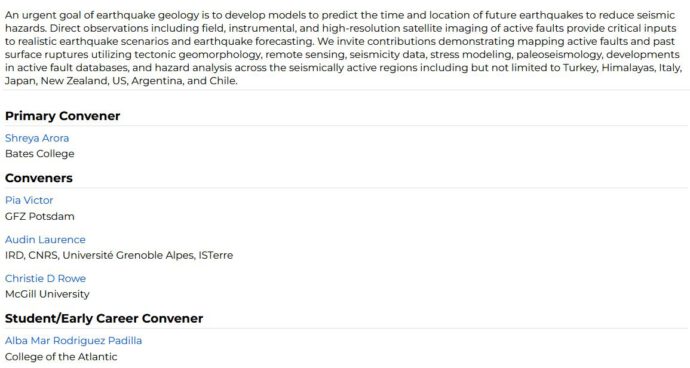Dear Colleagues,
We are aiming to organize a special issue titled: Earthquakes and active tectonics in regions of slow lithospheric deformation: towards a re-evaluation of Stable Continental Regions (SCRs). This special issue will complement a session on Intraplate Tectonics and Seismicity at the 37th International Geological Congress to be held in Busan, Korea in September 2024. The abstract for the IGC session is below, followed by our solicitation for contributions to the special issue. If you are interested in submitting an article to the special issue, please let us know a tentative title your list of authors by the 15th of December 2023.
We hope that you will join us in Busan and consider submitting your intraplate research to our special issue.
Sincerely,
The editors: Klaus Reicherter, Beau Whitney, Sambit Naik, Pierre Arroucau, Christoph Grützner, Stéphane Baize, Jim McCalpin
This will be the last paper list of the year, time is flying. We have classical paleoseismological studies, historical earthquake research, a few papers on secondary effects, but also studies looking into more general physics questions of large earthquakes. Enjoy reading!
more
This has become a long list again, and I partly blame the New Zealanders who are currently publishing a lot of studies related to their new hazard model. Really cool work! But of course the inclined readers will also find other gems for their taste. As always – please send me paleoseismology studies that I have missed. Enjoy reading!
more
The 12th international PATA Days will be held in Los Andes, Chile, 6-11 October, 2024. PATA stands for Paleoseismology, Active Tectonics, Archaeoseismology and it is the main activity of the paleoseismology community within INQUA’s TERPRO commission.
more
More and more papers emerge on the February, 2023 earthquakes in Turkey and the East Anatolian Fault System. Additionally, we have a database of paleoseismology studies in New Zealand (spoiler: it’s a lot!) and many more papers on paleoseismology and tectonic geomorphology. Enjoy reading!
more
Geomorphic indices can tell us about the tectonic activity of an area. The idea is that the landscape records the signal of active tectonics, for example in its river network, in its erosion pattern, or in its roughness. Geomorphic indices allow us to quantify this, that is, we can use standard algorithms to calculate numbers from a DEM that say ‘active’ or ‘inactive’. This is very attractive because essentially, all that is needed is a DEM and a GIS (and perhaps MATLAB). The number of papers on geomorphic indices is currently exploding, and I guess the fact that the method is so cheap and easy to apply plays a major role in that. No expensive field work, still meaningful results. But is this always true? In a new open access paper, we argue that without ground checking, probably not, at least in many cases.
more
This month’s paper list has an usually large number of studies on active tectonics of the Balkans and southern Europe. Is this a sampling bias? Perhaps. Don’t hesitate to send recommendations if you publish something cool that you’d like to see included. Enjoy reading!
more
I’m a bit late this month, so the list is a bit longer. This time we have lots of coastal and offshore studies, even a seafloor earthquake rupture! Enjoy reading.
more
The second circular for the TERPRO INQUA summer school on Active Faults and Volcano-Tectonics, 25-28 Sept., 2023, in Naples, Italy has been published.
more


